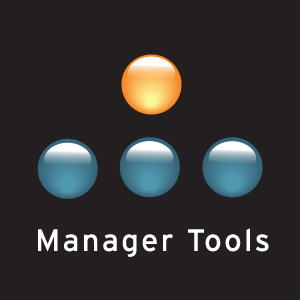Is This Normal? Episode 2
Is This Normal? Episode 2

Is This Normal? Episode 2
In this bonus podcast, Mark comments on the recent Wall Street Journal article that featured Manager Tools.
How to provide some guidance or corrective input when feedback might be more than enough, or to ease a less experienced direct into a performance culture.
Part 2 of our Hall of Fame guidance on delivering a performance review.
Part 1 of our Hall of Fame guidance on delivering a performance review.
Part 2 of one of our Hall of Fame casts on how to prepare performance reviews.
This week, we're re-releasing one of our Hall of Fame casts on how to prepare performance reviews (part 1).
Part 2 of our guidance on effective ways to get input for decisions in meetings.
Part 1 of our guidance on effective ways to get input for decisions in meetings.
It's unprofessional to deliver new information to a direct in a performance review.
Don't rank candidates as you are interviewing, individually or collectively. It biases the hiring process.
In today's fast and flat world, ideas are becoming critical competitive advantages. Managers - and many others - need to be good at getting the most and best ideas from themselves and their teams. This cast tells you how.
There are two general reasons to consider firing someone. Only one of them is "job performance." The other is tearing down the team.
Perhaps the most frequently asked question at conferences about rolling out the tools in the Management Trinity is why we recommend waiting three weeks. Here's why.
Our guidance regarding what is normal in professional and organizational life.
How to define a direct's "bad attitude" in terms of behaviors, to encourage them to change them.
Too many of us follow an unanswered email with another email. That's the definition of insanity: doing the same thing and expecting different results.
How to handle the politically delicate moment when you're asked to talk about a difficult person or situation.
Most managers have too high a standard for giving positive feedback. Here are some simple examples.
The common response to questions about status is, "Fine." This isn't acceptable or effective.
Even though great interviewers are looking for reasons to say no doesn't mean they aren't forgiving of mistakes in interviews.
What to do when people are on their phones/laptops during meetings, or doing anything else counterproductive to the meeting.
One of the biggest mistakes in interviewing candidates is using panel interviews. Here's why.
Part 2 of our series on change efforts. If you want your organization to follow you in change efforts - whether it's rolling out the Trinity or anything else - you've got to do 2 things at a minimum: model the behavior, and measure it.
If you want your organization to follow you in change efforts - whether it's rolling out the Trinity or anything else - you've got to do 2 things at a minimum: model the behavior, and measure it.
Never introduce a managerial change without first introducing that change. If you're going to make a change to how you manage your team, it works far better to tell them what you're doing in advance.
Never introduce a managerial change without first introducing that change. If you're going to make a change to how you manage your team, it works far better to tell them what you're doing in advance.
Part 6 of our guidance on how to scan a resume to decide whether or not to phone screen a job candidate.
Part 5 of our guidance on how to scan a resume to decide whether or not to phone screen a job candidate.
Part 4 of our guidance on how to scan a resume to decide whether or not to phone screen a job candidate.